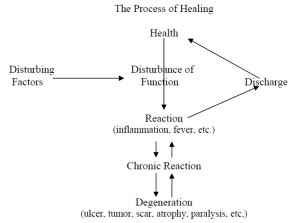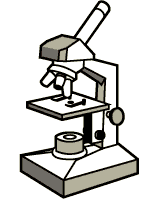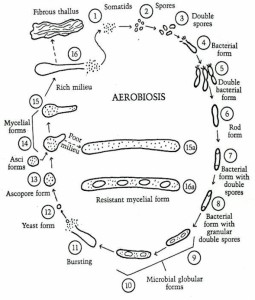Disease or Disease-Condition?
“there are no specific diseases: there are specific disease-conditions.”
– Florence Nightingale Notes on Nursing, after her long experience of observation
What’s the difference? What does it matter?
It makes all the difference in the world when you are choosing treatment or even how you feel about your life and your health.
Why?
Let’s step back from medicine, western or alternative, and consider how life might work and how we are engaging that knowledge for our health.
In a previous article, I wrote about the question “Is the Universe Friendly?” as that helps determine how we make our way in it. Decidedly, Naturopathic Physicians come from the viewpoint that health is our natural state of being. Therefore, what we perceive as illness is what the Vital Force within is producing in an effort to balance and regain health. As I said previously:
 When there are disturbing factors, the Vital Force kicks in and has the ability to react, and is so doing, creates a discharge which restores health. This is the optimal scenario. Too often, that reaction is halted or compromised (as when an aspirin is given to bring down a fever, a decongestant given to dry up a nose, or antibiotics given to clear up an ear infection) setting up a chronic reaction which leads to degeneration.
When there are disturbing factors, the Vital Force kicks in and has the ability to react, and is so doing, creates a discharge which restores health. This is the optimal scenario. Too often, that reaction is halted or compromised (as when an aspirin is given to bring down a fever, a decongestant given to dry up a nose, or antibiotics given to clear up an ear infection) setting up a chronic reaction which leads to degeneration.
The Vital Force engages the Healing Power of Nature, that friendly force that we work with in Naturopathic Medicine. A world in which a friendly healing force is on your side is much different than a world that has threats from every direction, some virus or bacteria or fungus or some unknown disease that could get you.
What about diseases?
Notice that I did not mention diseases in the friendly universe scenario.
 Western medicine is the one who is in the business of classifying what disease you have in order to give it an insurance code, a prescription medication, and most likely – a referral to a specialist.
Western medicine is the one who is in the business of classifying what disease you have in order to give it an insurance code, a prescription medication, and most likely – a referral to a specialist.
Western medicine does identify some risk factors, and so tries to prevent disease by giving you medications, send you to a dietician, or tell you to exercise, but a lot of the factors seem beyond anyone’s comprehension. You “catch a cold” or “get gout” or “develop an auto-immune condition.” But why didn’t your wife, or someone who has the same diet you have?
Disease is something that just happens to you, and you try to get rid of as soon as possible. And if that is not possible, learn to live with as best you can.
Now, disease-conditions . . .
Disease-conditions are a different story.
This acknowledges that although our physiology acts in pretty much the same way for everyone we manifest illness in quite different ways. There is not something “out there” waiting to get us (remember the Universe is friendly) but our vital force is responding to some imbalance starting on the inside. This imbalance, which includes the physical, mental, emotional, and spiritual levels, can be seen as the disease-condition, the terrain, or the environment.
Louis Pasteur, the microbiologist that championed the theory that specific microbes caused specific diseases, changed his mind on his deathbed and declared “the microbe is nothing, the terrain (environment) is everything.”
A history lesson
 Let’s go back to the invention of the microscope by Anton von Leeuwenhook in the 17th century. He could see organisms in plant and animal tissue, but their interpretation was limited due to the prevailing beliefs. By 1839, a cell theory of plants and animals was developed by German biologists when cell membranes and their nuclei could be identified.
Let’s go back to the invention of the microscope by Anton von Leeuwenhook in the 17th century. He could see organisms in plant and animal tissue, but their interpretation was limited due to the prevailing beliefs. By 1839, a cell theory of plants and animals was developed by German biologists when cell membranes and their nuclei could be identified.
Then in 1855 Rudolph Virchow developed an idea of cellular pathology from his observations. He explained that disease arises from abnormal life conditions of the cells in the organs and tissues affected.
As there was always controversy over ideas, new discoveries seemed to support one idea or another. When Robert Koch showed that a certain bacillus causes tuberculosis, and verified with other diseases, it became widely accepted that a specific type of bacteria causes a specific illness. Then Cohn classified bacteria into groups and subgroups based on their structure and form and biochemical characteristics, and it seemed to seal the deal.
But at the same time, another group of scientists saw that microorganisms can go through different stages of development and evolve according to terrain (cell environment) within a single life cycle. They went on to observe that many accepted species were only the expression of variability in a single species.
 One of this group was Dr. Enderlein, who extensively researched microorganisms both under the light microscope and with dark-field microscopy with even greater magnification. He published his findings in his book Bacterien Cyclogenie in 1925. His analysis was with live blood so he could see changes that his colleagues could not in one sample in a petri dish.
One of this group was Dr. Enderlein, who extensively researched microorganisms both under the light microscope and with dark-field microscopy with even greater magnification. He published his findings in his book Bacterien Cyclogenie in 1925. His analysis was with live blood so he could see changes that his colleagues could not in one sample in a petri dish.
What he saw was that microorganisms live in harmony with the body’s cells and perform beneficial functions. Then when the body’s internal environment changed acidity or accumulated toxins, the microbes changed stages in order to survive, and could cause disease. This range could be from a tiny ultramicroscopic particle to a virus to a bacteria to a fungus. And the microbe could be maintained at one stage for quite a while, making the appearance of a single unchangeable form.
In the last century or so, this Pleomorphic Theory has been largely ignored. Western science has been following the idea of one bug, one disease. But there are some glitches, specifically in the difficulties in treating what is known as Lyme disease. For one, at least 3 forms are recognized, and the infectious agent changes form in response to certain treatments, like it is trying to evade the body’s defenses.
An Everyday Example
 We all know someone who has had a raging bacterial infection was was treated with antibiotics. What was the outcome? Usually feeling much better, but then a yeast (fungal) infection like candida followed.
We all know someone who has had a raging bacterial infection was was treated with antibiotics. What was the outcome? Usually feeling much better, but then a yeast (fungal) infection like candida followed.
It is commonly believed that the antibiotic killed off the beneficial gut bacteria, allowing the yeast to overgrow, but there may be something more going on. Life protects life, and life will adapt to survive.
This even goes for bacteria. Sometimes bacteria mutate to become resistant to antibiotics. But have you considered that they may change stage to survive? Yes, bacteria can change to fungus according to the Pleomorphic theory and they would do so in an environment that is even more toxic or acidic. What did the antibiotic do to change the environment? How did the body respond?
Also, look at the researchers hypothesizing that cancer is caused by a fungus. Could they be on the right track as the terrain is the common element – being more and more acidic with fungus and cancer, but have confused causation?
An Interesting Correlation
Dr. Enderlein called the living protein particles sized about one – one hundred thousandth of a millimeter that have beneficial functions in the body and which can change stages when the environment becomes too acidic “protids.”
Bechamp called them “microzymas,” because he could see that they acted like enzymes in that they catalyzed changes, but realized that they were far more basic to life than cells.
Gaston Naessens called them “somatids,” meaning tiny body, which he found to be a sub-cellular, living and reproducing form which can develop into many stages, the first of which are crucial to normal healthy functioning. He went on to reveal that the somatids are virtually indestructible, even in high temperature, nuclear radiation, acidic environment, and will not be cut with a diamond. They are the one thing that survive cells’ death.
“Soma” is something in ancient Eastern texts that is the fundamental source of health, longevity, and possibly immortality. It is the primary physical carrier of the superfluid functioning in the nervous system to maintain higher consciousness. Is this what these scientists have found?
Take Home Point
Does this change your perspective of the human body and what is going on in health?
What if the terrain is everything? What influences terrain? Do these sound familiar to maintaining vibrant health?
- Upward spiraling attitudes and thoughts
- Appropriate food and beverages
- Minimizing exposure to heavy metals, pesticides, herbicides, and other toxins
- Movement of the body
- Rest of the body and mind
- Social connection
- Spiritual connection
What else would be effective in changing the terrain once the somatids have advanced stages? What about Biotherapeutic Drainage and Homeopathy?
Back to Florence Nightingale
“Is it not living in a continual mistake to look upon diseases, as we do now, as separate entities, which must exist, like cats and dogs, instead of looking at them as conditions, like a dirty and a clean condition, and just as much under our control; or rather as the reactions of a kindly nature, against the conditions in which we have placed ourselves?”
Does the pleomorphic theory of microbes resonate with you?
Can you see the Universe as friendly, supporting you even through imbalance as you grow?
Please comment below.
WANT TO USE THIS ARTICLE IN YOUR NEWSLETTER OR WEB SITE?
“Naturopathic Physician Dr. Cheryl Kasdorf is a doctor who listens and has answers with a natural approach that works. She is known as the go-to person to get back your get-up-and-go when it is gone, gone, gone. Get your FREE gift “Dr. Kasdorf’s Health Secrets for Feeling & Looking Great” at drcherylkasdorf.com




